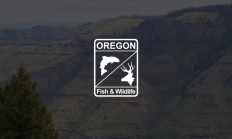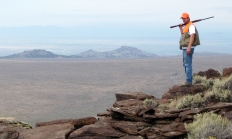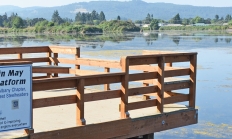Search myodfw.com
Note: Recreational ocean crabbing is closed through Nov 30. SALEM, Ore.- Get outdoors with friends and family and enjoy free fishing, crabbing and clamming on Friday and Saturday, Nov. 28 and 29. Statewide free fishing days are a great chance to take someone new fishing and celebrate Oregon's natural resources…
Newport, Ore. – Oregon's commercial Dungeness crab season is delayed coastwide until at least Dec. 16, the Oregon Department of Fish and Wildlife announced today. Oregon Dungeness crab met both meat and safe biotoxin level requirements; however, the season is delayed as Long Beach, WA crabs have not yet met…
KLAMATH FALLS, Ore. – Recreation access sites within the restored Klamath River reach between Keno, Ore., and Hornbrook, Calif., will remain open as winter conditions allow. The five recreation day-use access sites now open until further notice are as follows: Pioneer Park West (Ore.) Moonshine Falls (Ore.) K'utárawáx·u (prounounced ku-ta-ra-wa-hhu)…
SALEM, Ore – Mussel harvesting is now closed from Cape Blanco to the California border the Oregon Department of Agriculture and the Oregon Department of Fish and Wildlife announced today. Recent mussel samples indicate levels of Paralytic Shellfish Toxin – a naturally occurring marine biotoxin that can cause Paralytic Shellfish…
ODFW's Oregon Conservation and Recreation Advisory Committee meets Dec. 2 SALEM, Ore. – The Oregon Conservation and Recreation Advisory Committee will meet on Tuesday, Dec. 2, from 1 p.m. to 3:30 p.m. The Conservation and Recreation Advisory Committee will be reviewing application questions ahead of their Round 10 grant solicitation…
CORVALLIS, Ore. — The Oregon Hatchery Research Center Board will meet in Corvallis on Tuesday, December 2 from 11:00 a.m. to 1:00 p.m. at the Oregon Department of Fish and Wildlife South Willamette Watershed District Office (7118 NE Vandenberg Avenue, Corvallis, OR 97330). In addition to the regularly scheduled items…
SALEM, Ore.—Oregon's Fish Screens Task Force and Fish Passage Task Force will meet jointly Friday, Dec. 5 from 8 a.m. to 12:30 p.m. online. The meeting will be open to the public. Members of the public who are interested in the meeting are encouraged to attend in person or participate…

SALEM, Ore. – A Chinese mitten crab, a prohibited species in Oregon, was found in the Willamette River near the Sellwood Bridge and reported to ODFW on Nov. 17. The crab was spotted in shallow water and captured by hand. It was alive and not released back into the river…
SALEM, Ore. – People across Oregon are being urged to avoid contact with sick or dead birds as highly pathogenic avian influenza (HPAI) continues to impact wild and domestic bird populations across the state. There is currently no effective treatment for wild and domestic birds, and the virus can spread…

Newport, Ore. – Oregon's commercial Dungeness crab season opens Dec. 16 from Cape Falcon to the California border, the Oregon Department of Fish and Wildlife announced today. Crab will be available in time for the holiday season. Oregon will open the north coast to align with Washington once Long Beach…
SALEM, Ore.—The Oregon Fish and Wildlife Commission will meet Thursday and Friday, Dec. 11-12 to set 2026 groundfish regulations and hear an informational briefing on the barbless hook requirement for Columbia River recreational fisheries. Both a Dec. 11 workshop and Dec. 12 meeting will be in a hybrid format, allowing for…

SALEM, Ore. – The Oregon Conservation and Recreation Fund (OCRF) Advisory Committee is excited to announce that its next grant cycle will begin accepting applications on Monday, Dec. 15, with the application window open through Feb. 9, 2026. Visit the Online Application System and enter access code "OCRF" to begin…
Find maps, boundary descriptions and the percent public land for the Dixon Unit.

Find maps, boundary information and the percent public land in the Evans Creek Unit.


Find maps, boundary descriptions and the percent public land for the Fort Rock Unit.
